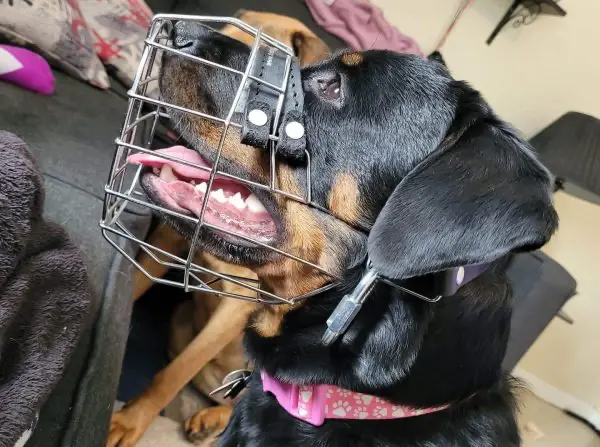
Rating: NNNNN
For most of us, our spines don’t travel in a perfectly straight line from tailbone to skull. There are usually a few meanders to one side or the other along the way. Sometimes the deviation is so slight that it can’t be detected except on an X-ray. Or you might notice a difference in flexibility between the two sides of your body at various points along the torso. Another telltale sign of spinal curvature is that one shoulder or hip will be slightly higher than the other. Or your ribs may be more prominent on one side.
None of this is necessarily worrisome – unless you happen to be an adolescent or are about to become one, or you notice your asymmetries getting worse. Scoliosis that begins just before or during puberty can progress quickly, and if left untreated will result in physical deformity and potential pain and altered muscle, nerve, bone, heart and lung function.
For unknown reasons, young women are more likely than young men to develop a severe form of the condition. Spinal curves can worsen in adulthood as well, but tend to do so more slowly. If you notice shifts for the worse, you need medical evaluation. If you’re one of the millions of adults whose backs are just a little off-kilter and don’t change much, your most important concern is to maintain mobility in all the joints between the vertebrae. Yoga , Pilates and osteopathic or chiropractic adjustments can all help you here. One other treatment option for bent backs is called Raindrop Technique. Practitioners suggest that properly distilled and applied therapeutic-grade essential oils may eliminate the infections and inflammations that are causing spinal tension. The theory isn’t widely known or accepted in either the alt or allopathic communities. If you decide to try it, your MD, osteopath or chiropractor should continue to monitor your backbone’s condition.
What the experts say
“It’s the rare person who doesn’t have some scoliosis. If you have an X-ray done, get a medical one rather than one by someone who might have an agenda for further treatment. Often, it needs no treatment. Many people live comfortably with a scoliosis – it’s how you move within that. When the alignment is off, your muscles and ligaments are working overtime. This is where the awareness developed through Feldenkrais is so important. You learn what could be exacerbating a problem and how to achieve a more balanced use of your muscles. Some clients gain height.”
MARION HARRIS , Feldenkrais practitioner, Toronto
“It’s more common to have deviation from the vertical than the lateral. People with excess abdominal weight often extend backwards, causing lower back pain. Many people stick their head out to the front. That leads to neck pain and headaches. Lateral curves of up to 10 degrees have no significance. If it’s getting worse, you have to monitor it. Up to 20 degrees you can treat posturally. Between 20 and 40 degrees you can manage conservatively (with braces). After 40 degrees you need an assessment for surgery. Chiropractors mostly deal with functional scoliosis. When you get the person to bend the opposite way, the curve straightens out. We educate people on posture, exercises.”
NATALIA LISHCHYNA , chiropractor, clinical faculty, Canadian Memorial Chiropractic College, Toronto
“I have seen scoliosis remarkably improve in myself and others from Raindrop Technique – essential oils administered as ‘raindrops’ over the spine. Research shows that some of the oils may contain antibacterial, antiviral, antiparasitic, antitumoral and anti-inflammatory agents. Properly distilled oils are one of the few known substances that can cross the blood-brain barrier. They also go into the cerebrospinal fluid, a nutrient-rich broth that delivers information to every cell.’
NANCY ORLEN WEBER , RN, medical intuitive, Denville, NJ
“If it’s extremely severe, scoliosis can interfere with the mechanics of the lungs and heart. But relatively few people have deviations that require treatment. Once it’s reached the stage that it’s obvious to an observer, then treatment has to be considered. There’s no evidence that chiropractic or osteopathic intervention can correct or delay progression of curvature. Curvatures can progress in adults, but at a much slower pace (than in adolescents). If people notice that they are becoming deformed, they need to see their family physician. I have no opinion on whether viruses could cause scoliosis viruses are often very difficult to pick up. But that essential oils could somehow eradicate it and straighten the spine is something I wouldn’t accept.’
JIM WRIGHT , professor of surgery, U of T, orthopedic surgeon, Hospital for Sick Children, Toronto
“If you have a scoliosis it’s important to get it moving. As long as it’s mobile, it’s not a problem. Some osteopaths believe most scoliosis comes from cranial (bone movement) restrictions. The spine has to compensate for the restriction. You also have relationships between the internal organs and specific spinal segments. An internal organ rigidity (i.e., from an injury) may need to be addressed to free up the corresponding spinal segments. A lot of people are advised to undergo prolonged treatment, but our belief is if you get something moving again, it shouldn’t come back. Typically, osteopathic treatment runs from three to 12 sessions.”
KEVIN STOCKER , registered massage therapist studying osteopathy












